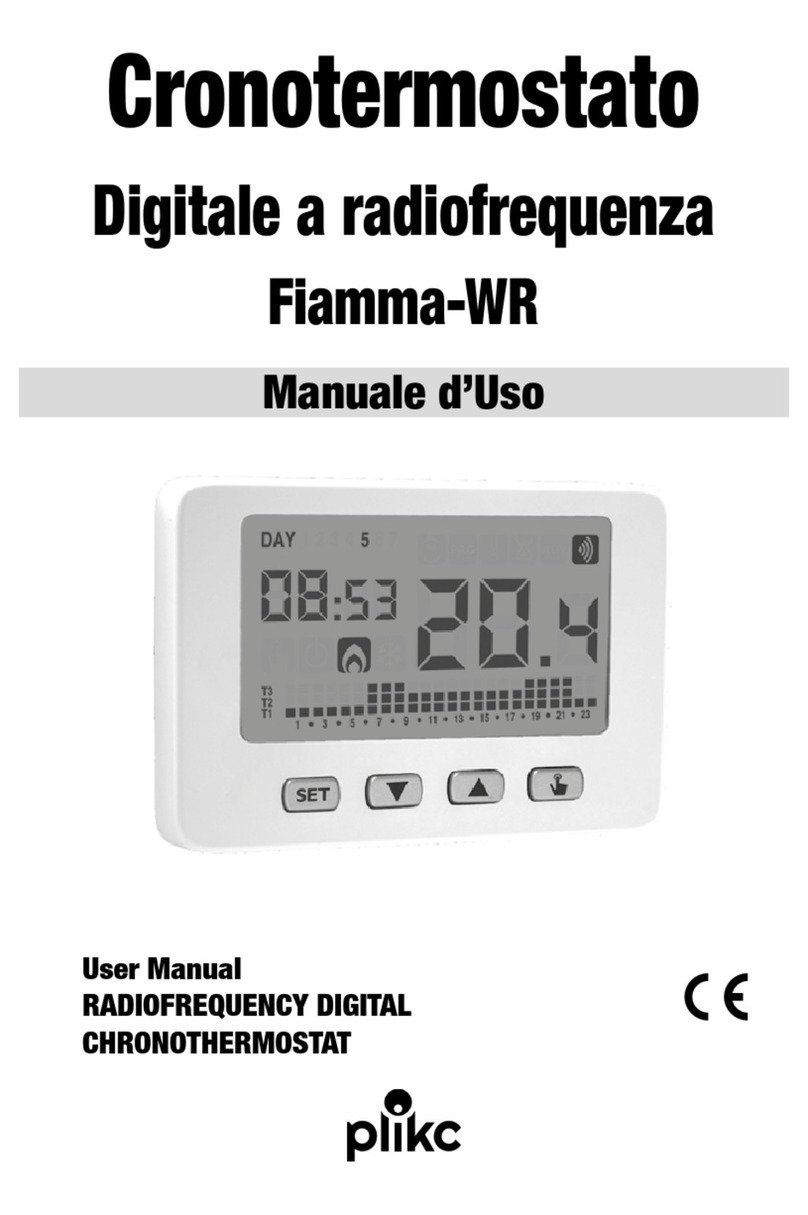
How to set the temperature
1. Turn the dial in clockwise to increase the temperature, and then press the SET button to confirm or wait for 5
seconds to automatically confirm.
2. Turn the dial in anti-clockwise to reduce the temperature, and then press the SET button to confirm or wait
for 5 seconds to automatically confirm.
How to calibrate the temperature
Hold the SET button for 5 seconds to access the system running mode switch interface, then press to access
the interface of temperature calibration “CAL” (in -3.0~+3.0, in 0.5°C increments); Turn the dial to set the
desired value, then press the SET button to confirm.
Backlight
The backlight will be turns on by press any buttons and turns off when there is no activity after 15 seconds.
How to replace the batteries
The average battery life is 1 year, but the frequent use of the backlight can reduce this time considerably. If the
icon indicating low battery voltage appears on the display, the batteries must be replaced.
The Receiver
Installation and connection of receiver
The receiver must be mounted on the wall in a place protected against humidity and heat, close to the boiler.
ATTENTION! Do not install the receiving unit under the housing of the boiler or close to hot pipes
because they may damage parts of the device or compromise wireless connection (radio-frequency).
To avoid electric shock, have an expert connect the receiver to the boiler!
Unscrew the two screws at the base of the receiver unit without removing them. Then remove the receiver
unit’s front panel and then secure the back panel to the wall close to the boiler with the screws provided.
230V mains voltage should be supplied to the receiving unit. This provides power to the device, but this voltage
does not appear on terminals 1 and 2. We propose to connect the neutral network to point N, while the phase
conductor to point L. We recommend to use a fork-type connection with switch for mains connection. Please
turn off the device when not used (eg.summer).
The receiver unit controls the boiler or air conditioner through a zero potential relay whose connection points
are: 1(NO), 2(COM) and 3(NC). Connect the two connection points of the heating or cooling system to be
controlled to terminals No.1(NO) and No.2(COM), normally open terminals of the relay.
If you want to use an old boiler or any other device that has connection points for thermostats, then the 1(NO)
and 2(COM) of the thermostat connection points must be connected to the device power cord, in the same way
to connect a switch.
WARNING! Always consider the load capacity of the receiver and follow the instructions of the
manufacturer of the heating or cooling equipment. The device must be installed and connected by a
qualified professional!























